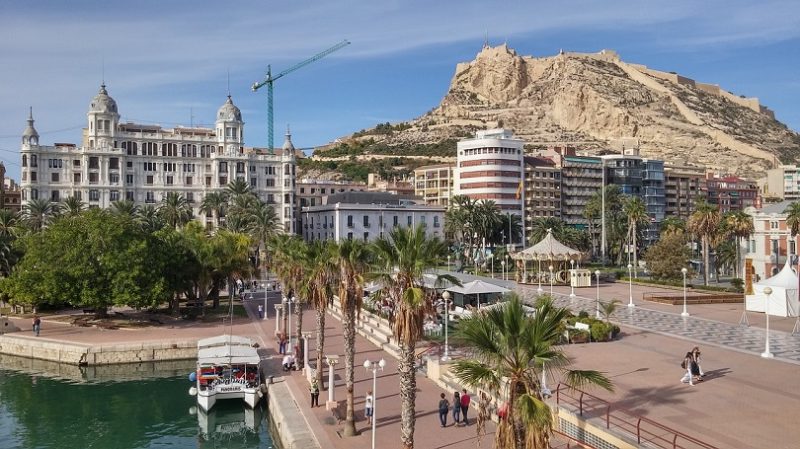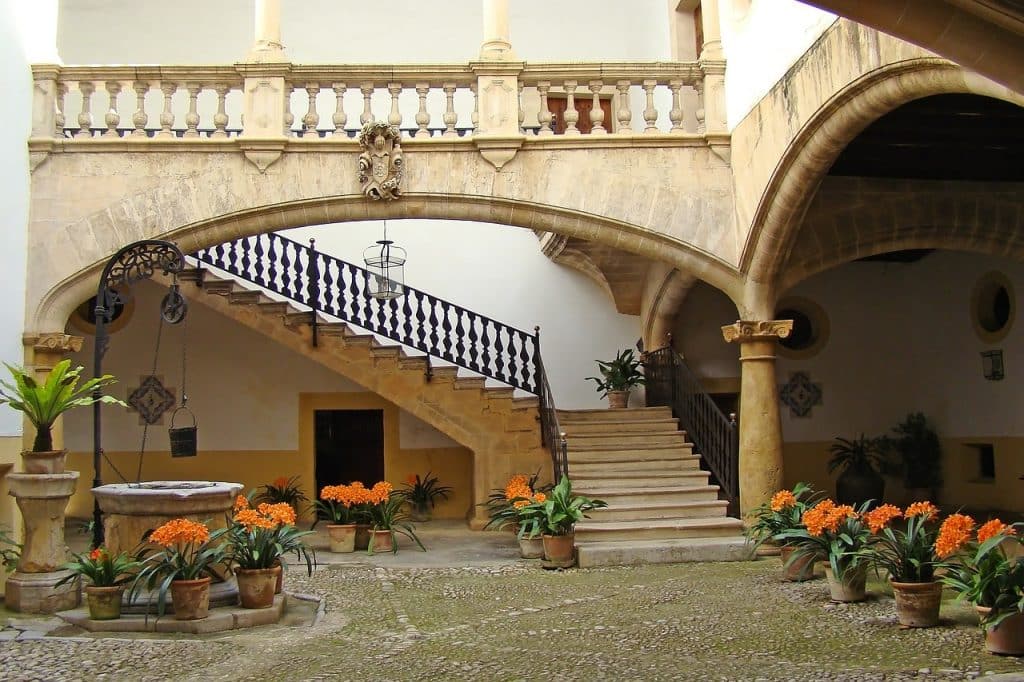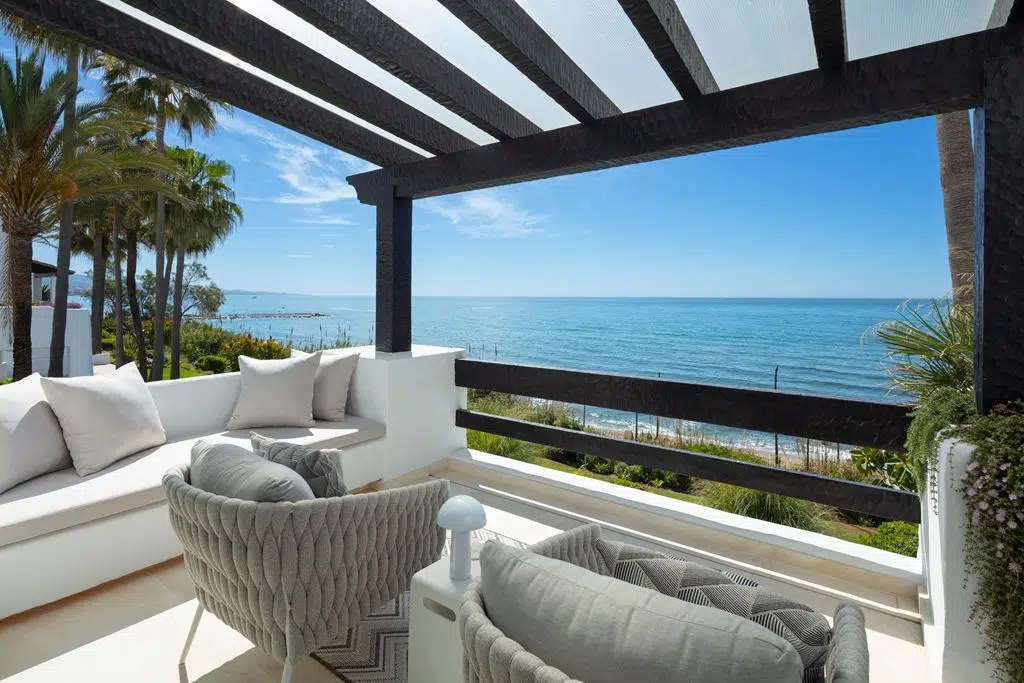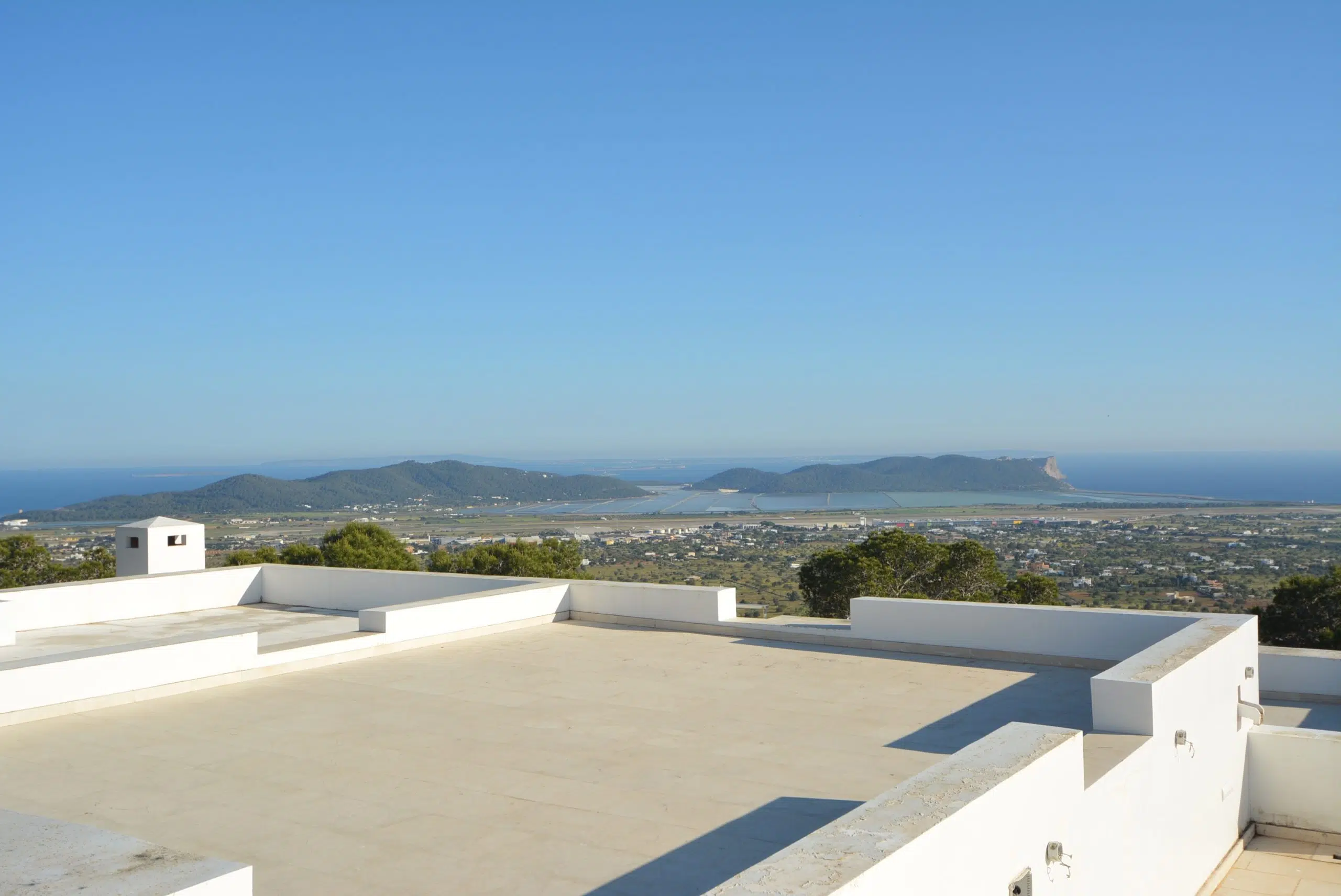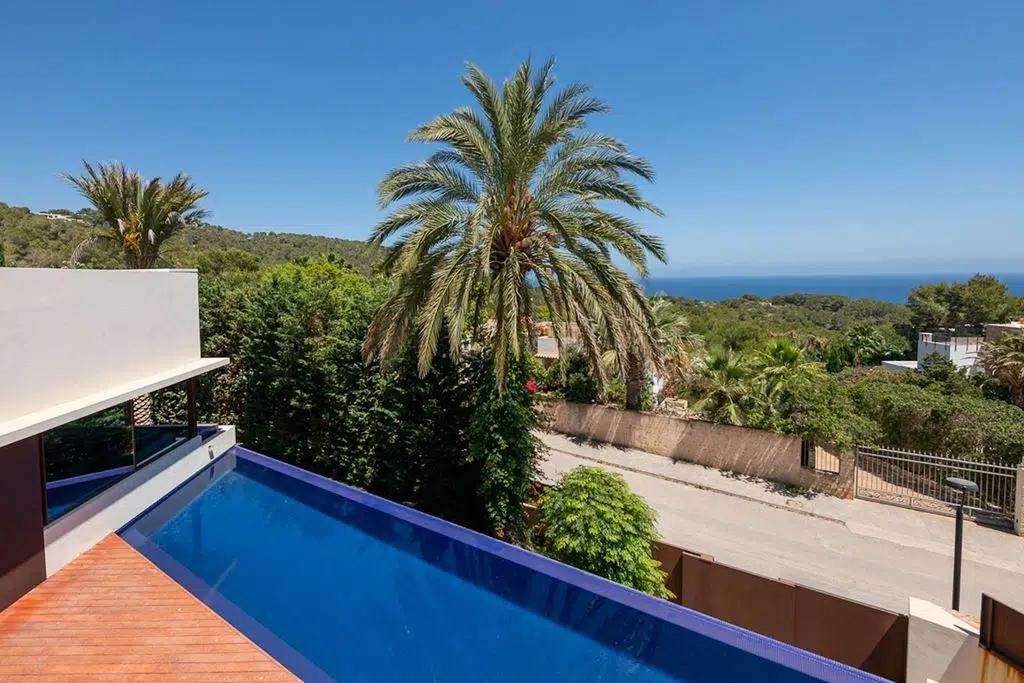Knowing where the best place to retire in Spain boils down to two aspects. Your personal lifestyle preferences and affordability. Lifestyle aspects to consider when choosing places to live in Spain are whether you want coastal living, small-town vibes, or to soak up art and culture in one of Spain’s big cities.
Spain has been a famous foreign country for decades and easily matches other countries’ retirement potential. Offering quality health care systems, low-cost living, ideal transport links, and unique culture alongside other English-speaking expats, no one needs to compromise when looking at retirement destinations.
From hot summers to mild winters, beach life, local and international cuisine, smaller towns and the Spanish culture, the popularity speaks for itself when considering European countries. Whether you want international schools for your family, to make your UK pension go further, or beautiful towns to pursue hobbies and interests, there is a place to retire in Spain that will suit you.
Best Places to Retire in Spain
When deciding on destinations, it is worth looking at which Costa you would like to relocate to.
1: Costa Del Sol
Sitting on the southern coastline part of Spain, the Costa del Sol epitomizes sun-kissed bliss. Stretching along the Malaga province, this region boasts 300 days of sunshine annually. The coast is dotted with lively resorts like Marbella and Torremolinos, where pristine beaches, palm-lined promenades, and luxurious beachfront hotels greet visitors. Costa del Sol offers various activities, including world-class golf courses and indulgent spas. Ideal retirement destinations to look at include Malaga, Marbella, Nerja, Fuengirola, Mijas and Estepona.
2: Costa Brava
Nestled in the northeastern part of Spain, the Costa Brava showcases rugged cliffs, hidden coves, and crystal-clear waters that entice nature enthusiasts and adventure seekers alike. This enchanting coastline extends from Blanes to the French border, offering charming fishing villages.
Explore Tossa de Mar with its medieval castle, visit the breathtaking Cap de Creus Park, or unwind on the idyllic beaches of Lloret de Mar. The Costa Brava’s beauty is complemented by delectable cuisine, characterized by fresh seafood and traditional Catalan dishes. Places to live on the Costa Brava include Lloret De Mar, Blanes, Begur, Figueres, Platja d’Aro and Palafrugell.
3: Costa Blanca
Spanning Alicante province, Costa Blanca offers pristine white sandy beaches and crystalline waters. This coastal paradise is blessed with pleasant Mediterranean climates, inviting visitors to bask in the sunshine throughout the year. Alicante’s majestic castle overlooks crystal waters, while Benidorm dazzles with high-rise skylines.
Explore the coastal towns of Altea and Calpe, or indulge in gastronomic delights, including delectable paella and succulent seafood. Places to retire to on the Costa Blanca include Orihuela, Torrevieja, Benidorm, Rojales, Elche and Marina Alta.
4: Costa de la Luz
Situated along the Atlantic coast in southern Spain, the Costa de la Luz is characterized by vast stretches of untouched golden beaches, windswept dunes, and tranquil fishing villages. This region offers refreshing escapes from the crowds with unspoiled, authentic charm.
Discover historic Cadiz city, with ancient architecture and lively carnival celebrations, or explore the pristine beaches of Tarifa, a renowned windsurfing and kiteboarding destination. Places worth considering include Antilla, Punta Umbría, Chipiona, Rota, Chiclana de la Frontera, Conil de la Frontera, Vejer de la Frontera and Zahara de Los Atunes.
5: Costa Dorada
The Costa Dorada coastline, meaning “Golden Coast” in English, in the Catalonia region of northeastern Spain, stretches for about 134 miles. This coastline features golden sandy beaches, crystal-clear waters, and attractions for locals and visitors. Some famous beaches include Playa de Levante in Salou, Playa de la Pineda, and Playa de Calafell. Places to look at include Salou, Reus, Cambrils, Tarragona and La Pineda.
6: Costa Del Azahar
Costa del Azahar, also called the Orange Blossom Coast, is in the eastern part of Spain, along the Castellón province in the Valencian Community. The orange blossom coast stretches for approximately 120 kilometres, offering various beach options for visitors. Some famous beaches include Playa de la Concha in Oropesa del Mar, Playa del Pinar in Castellón de la Plana, and Playa del Gurugú in Benicàssim. Popular Benicàssim also offers music festivals and promenades with restaurants, bars, and shops. Peñíscola is another notable town, featuring a medieval castle and an old town with narrow streets and whitewashed houses.
7: Popular Spanish Cities
But maybe, the beachside lifestyle isn’t what you seek. Urban living has many benefits in which case, the following cities are popular.
Seville: With high-speed transport connections and architectural marvels, the Seville city centre easily entices retirees. The city offers enchanting narrow streets and great tapas bars. Seville’s events, such as flamenco performances and traditional festivals, provide retirees rich experiences. The city also has a well-developed public transportation system and leisure activities.
Granada: Sitting at the foot of the Sierra Nevada mountains, the Granada city centre captivates retirees with enchanting blends of Moorish architecture and bohemian vibes. The city is home to the magnificent Alhambra palace and old town. Retirees can enjoy a relaxed lifestyle, explore the Albaicin neighbourhood, savour traditional tapas bars, and bask in the warm Andalusian sun.
Valencia: Valencia, Spain’s third-largest city, features impressive architecture. The city boasts a Mediterranean climate, beautiful parks, and an extensive coastline. Retirees can enjoy thriving cultural scenes, delicious cuisine, affordable cost of living, and excellent healthcare facilities. Valencia city centre offers easy access to nearby coastal towns and picturesque villages.
Madrid: Spain’s capital city centre: This Spanish city provides excellent healthcare, recreational opportunities, and a lifestyle that makes the city an attractive place to retire in Spain. Like other major cities, retirees enjoy world-class museums, art galleries, theatres, tapas bars, and music venues, all within walking distance of each other. The big city hosts numerous festivals, including the lively San Isidro Festival.
8: Retire in Spain to the Basque Country
The Basque Country, also called Euskadi or Pais Vasco, is an autonomous community bordering France in northern Spain. The largest city in the Basque Country, Bilbao earns fame for the Guggenheim Museum Bilbao, a masterpiece of contemporary architecture. The city offers modernity, tradition, a buzzing city centre, and bustling food markets. Bilbao attracts attention for lively theatres, music festivals, and art exhibitions.
Nestled on the Bay of Biscay, San Sebastian features elegant promenades and world-class cuisine. The city is home to La Concha Beach, considered one of Europe’s most beautiful urban beaches, and Zurriola Beach, a popular surf spot. San Sebastian boasts numerous Michelin-starred restaurants and famous pintxos bars in the atmospheric old town.
The capital of the Basque Country, Vitoria-Gasteiz is a charming and green city. The medieval old town features well-preserved architecture, including the impressive Santa María Cathedral. Vitoria-Gasteiz features extensive parks and green spaces, earning the title of European Green Capital in 2012. The city hosts events, such as the Virgen Blanca Festivities, with traditional Basque music, dance, and sports.
9: Canary Islands
The Canary Islands, a mesmerizing archipelago located off the northwest coast of Africa, is a haven of captivating landscapes. Comprising seven main islands and several smaller ones, this Spanish autonomous community offers a unique blend of breathtaking beaches, volcanic wonders, diverse flora and fauna, and a year-round mild climate.
Tenerife, the largest and most populous island, boasts incredible landscapes. The island’s golden beaches, such as Playa de las Américas and Los Cristianos, offer relaxation. Known as a “miniature continent,” Gran Canaria boasts charming towns like Puerto de Mogán and the historic district of Vegueta in the capital, Las Palmas de Gran Canaria.
Lanzarote’s lunar-like landscapes testify to the volcanic origins. Lanzarote also offers beaches, such as Playa Blanca and Famara. Fuerteventura easily attracts beach lovers with pristine sandy beaches and turquoise waters. The vast stretches of sand, like Playa de Sotavento and Playa de Corralejo, are ideal for sunbathing, swimming, and windsurfing. La Palma, often called “La Isla Bonita,” enchants visitors with lush green forests, dramatic cliffs, starry skies, and a laid-back lifestyle.
Our Favourite Picks of Places to Retire
10: Famous Alicante
While working expats often look at the best cities, most non-working expats looking to live in Spain end up in the Costas, with large expat communities. As a favourite of British citizens, Alicante, on the Costa Blanca, provides anyone planning to move there with everything on their doorstep, including great nightlife scenes, peaceful and lively, and shops galore. As one of the smaller towns and a well-connected airport within close proximity, expats enjoy typical hot summers, mild climates, and popular tourist areas. More about Alicante in Spain.
11: Retire to Javea in Spain
Also sitting on the Costa Blanca and fronting the Mediterranean Sea, British expats adore Javea, a popular retirement destination. Nicknamed the region’s pearl and sometimes called Xabia, this town sits at the foot of the Montgo Massif Mountain range, offering cooler climates. Although its beachside lifestyle features in day-to-day life, part of Javea’s charm is traditional atmospheres that are laid back simultaneously. Anyone looking for active adult communities and locals speaking English will visit Javea to see if it fits their dream of retiring in Spain.
12: Malaga City Life
For city life, Madrid, Spain’s largest city, is the first choice for working professionals retiring abroad. However, the central location prompts many non-working expats to look at Malaga on the Costa Del Sol instead. The Andalusian culture brings in thousands of people from near and far to experience the yearly festivals, historic old town, art scene, gorgeous beaches, and copious amounts of sun. As a city, shops and restaurants brim with choice. To explore your new home, excellent transport links take residents anywhere in Spain. Malaga is also home to the international airport.
13: Marbella city centre on the Costa Del Sol
If an upmarket, fast-paced lifestyle appeals, Marbella ticks all the boxes. The backing Sierra Mountain range overlooks many top-class golf courses and 26 kilometres of Mediterranean beaches within the Costa Del Sol’s Malaga Province. The most famous area of Marbella, the Golden Mile heads down to Puerto Banus, an elite port town filled with mega yachts, Michelin-star restaurants and designer boutiques. While everything is modern and trendy, the historical old quarter glimpses into bygone eras. Marbella coastal city is worth considering for somewhere to retire in Spain.
14: Torrevieja Beach Town for an Active Lifestyle
Torrevieja, one of many Spanish towns growing because of retiring ex-pats, is also famous for summer holiday home buyers. Sitting within the Alicante province, its roots date from 1803, yet the healthy climate boasted by the massive Salt Lake garners even more fame. What gives Torrevieja potential for your new retirement place? Well, when Spaniards rate the destination, this is something to notice. Torrevieja does just as well with Spanish retirees and holidaymakers as it does with foreigners. It is just a short distance from Alicante international airport.
15: Mallorca Island
The Balearic Islands, often named one of the best places to retire, present Majorca and its fast-growing ex-pat community. Also called Majorca, Palma is often called the best city. She leads the way in home prices and sales. Still, other scenic destinations include, Cala Dor, Cala Lliteras, Canyamel Pins and Sa Rapita. Many large cruise ships dock here. Breathtaking scenery, gorgeous beaches, an excellent nightlife and shopping scene, and good real estate markets are just snippets of the delights. This island is also grand for expat families and anyone looking to stretch their UK state pension.
Do I need to speak Spanish when I live in Spain?
While it is not absolutely necessary to speak Spanish to live in Spain, being able to speak conversational Spanish can significantly enhance your experience and make day-to-day life easier. Having said that, much of the English-speaking community gets by.
There are English-speaking doctors, shop staff, supermarket staff, and translators that make daily interactions easy, but numerous language schools, online courses, and language exchange programs can help you learn. Additionally, immersing yourself in the local culture and interacting with native speakers will accelerate your language learning journey.
What About Healthcare facilities?
Spain has one of the best healthcare systems that provide services to both Spanish citizens and foreigners who retire in Spain.
Public Healthcare System: Spain has a universal public healthcare system known as the Sistema Nacional de Salud (SNS). Under this system, foreigners living in Spain can access essential healthcare services. To be eligible for public healthcare, foreigners must be registered residents in Spain and have the necessary documentation, such as a valid residence permit or European Health Insurance Card (EHIC).
Access to Healthcare: Once you retire to Spain and register as a resident, you will receive a social security number and can access healthcare services through your assigned primary care doctor (médico de Cabecera). Primary care services are free or cheap, including general medical consultations, preventive care, and specialist referrals.
Healthcare Costs: While essential healthcare services are covered by the public system, there may be some out-of-pocket expenses, such as prescription medications, specific treatments, and specialist consultations. Depending on the individual’s circumstances and healthcare plan, these costs can be partially or fully covered.
Private Healthcare: Many foreigners who retire in Spain opt for private healthcare insurance to supplement their public coverage.
European Health Insurance Card (EHIC): European Union citizens who live in Spain can use their EHIC to access necessary healthcare services. The EHIC provides the same benefits as Spanish residents under the public healthcare system.
Emergency Care: In case of emergencies, both residents and tourists have the right to access emergency healthcare services in Spain, regardless of their insurance status. Emergency care is provided at public hospitals, and the public healthcare system typically covers the costs. Healthcare systems and regulations may change, so when you retire in Spain, check for updated information and healthcare facilities of where you will move to.
Buying Property in Spain
We hope we have given plenty of suggestions for the best place to retire in Spain. If you are also looking to buy property, our portfolio provides an excellent introduction to regional real estate markets. Each listing contains the price, location, home features, local details, and contact numbers to arrange viewings. Alternatively, contact us and chat with an agent about the best places to retire in Spain.


